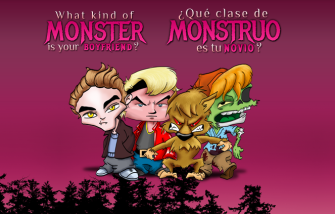Ever so seemingly innocent, teenage relationships may often be perceived as temporary, a phase of “puppy love” without malintent, but new research suggests one in three adolescents in the United States, between 14 and 20 years old, report being victims of dating violence.
In that same research, presented at the American Psychological Association’s 121st annual convention in Hawaii this week, almost one in three adolescents, in turn, report committing violence toward a date.
“Adolescent dating violence is common among young people,” Michele Ybarra, the president and research director at the San Clemente, Calif.-based Center for Innovative Public Health Research, said in a statement.
The violence, according to Ybarra, also cuts across victims and perpetrators, and includes different types of abuse.
But how can educators and parents be sure that their youths’ “puppy love” relationship isn’t violent or abusive?
Drew Crecente, whose daughter was murdered by an ex-boyfriend in 2006, decided to make a yearly competition out of the issue in efforts to educate teenagers about the signs of an abusive relationship.
After all, it’s not just physical bruises and broken limbs that can signal abuse. There’s psychological abuse as well.
The Live. Love. Game Design Challenge, now in its sixth year, invites designers and developers to create games focused on teen dating violence.
Teen dating violence is an underacknowledged problem, Crecente told the New York-based, Fast Company‘s Co.Exist blog, and schools and parents don’t always discuss teen relationships openly.
The games, made by teens for teens, are designed to be age-appropriate to get the message across in the most effective manner possible.

For example, the winner of this year’s game challenge, called “What Kind of Monster Is Your Boyfriend?,” uses pop-culture references many teens are familiar with if they’ve seen or read the Twilight books or movie series. It’s also bilingual (English, Spanish).
The game takes teenagers through different situations, and gives them response options to choose from. At the end, the game provides a score telling the player how abusive her boyfriend is (accompanied with adorable cartoon images of a vampire, werewolf, and zombie).
In a format that may be more relatable (although definitely not as exciting as werewolves and vampires), the third-place winning design uses a social application akin to Facebook to educate teenagers about the signs of relationship violence.
After each interaction, the game provides some statistics and examples of signs to look for like insults and name-calling or controlling behaviors that occur both on- and offline.
In February, U.S. Education Secretary Arne Duncan sent a letter to state education chiefs, urging them to do more to address the issue of teen-dating violence, sexual assault, and human trafficking.
Other efforts by advocates and organizations have also been made to increase education programs for adults and teens to prevent violence.
In 2011, Vice President Joe Biden launched 1 is 2 Many, an initiative that expands on his longstanding commitment to reduce violence against women.
In 2012, President Barack Obama dedicated the entire month of February to teenage dating violence awareness and prevention.
Many states have laws on teen-dating violence, and there are various resources available to help teenagers understand when a relationship is abusive, but the game challenge started by Crecente may potentially have a greater impact.
Not only are the games made for teens, but they’re made by teens, so they are relatable and easy to understand, while possibly being more engaging than a pamphlet from the school nurse’s office.
Screenshot from “What Kind of Monster Is Your Boyfriend?” game.